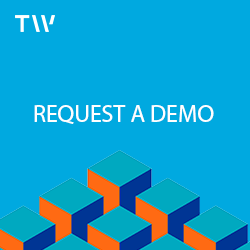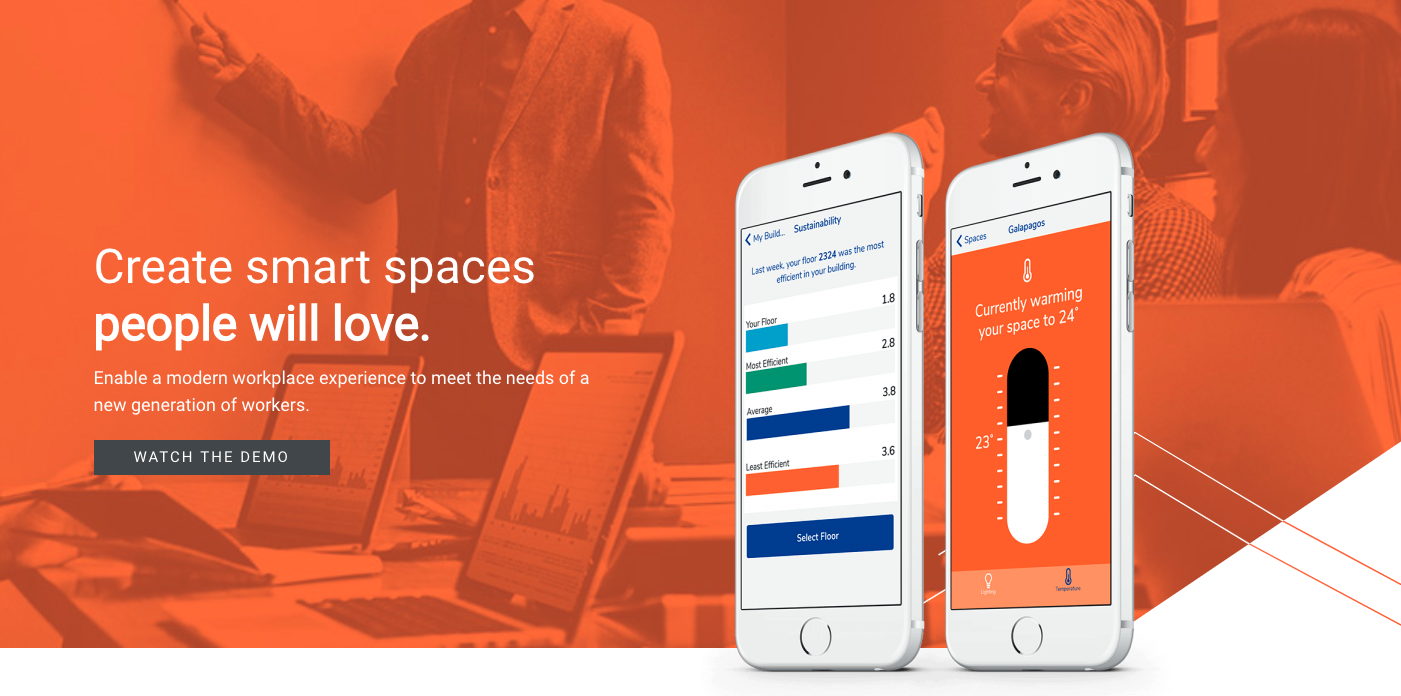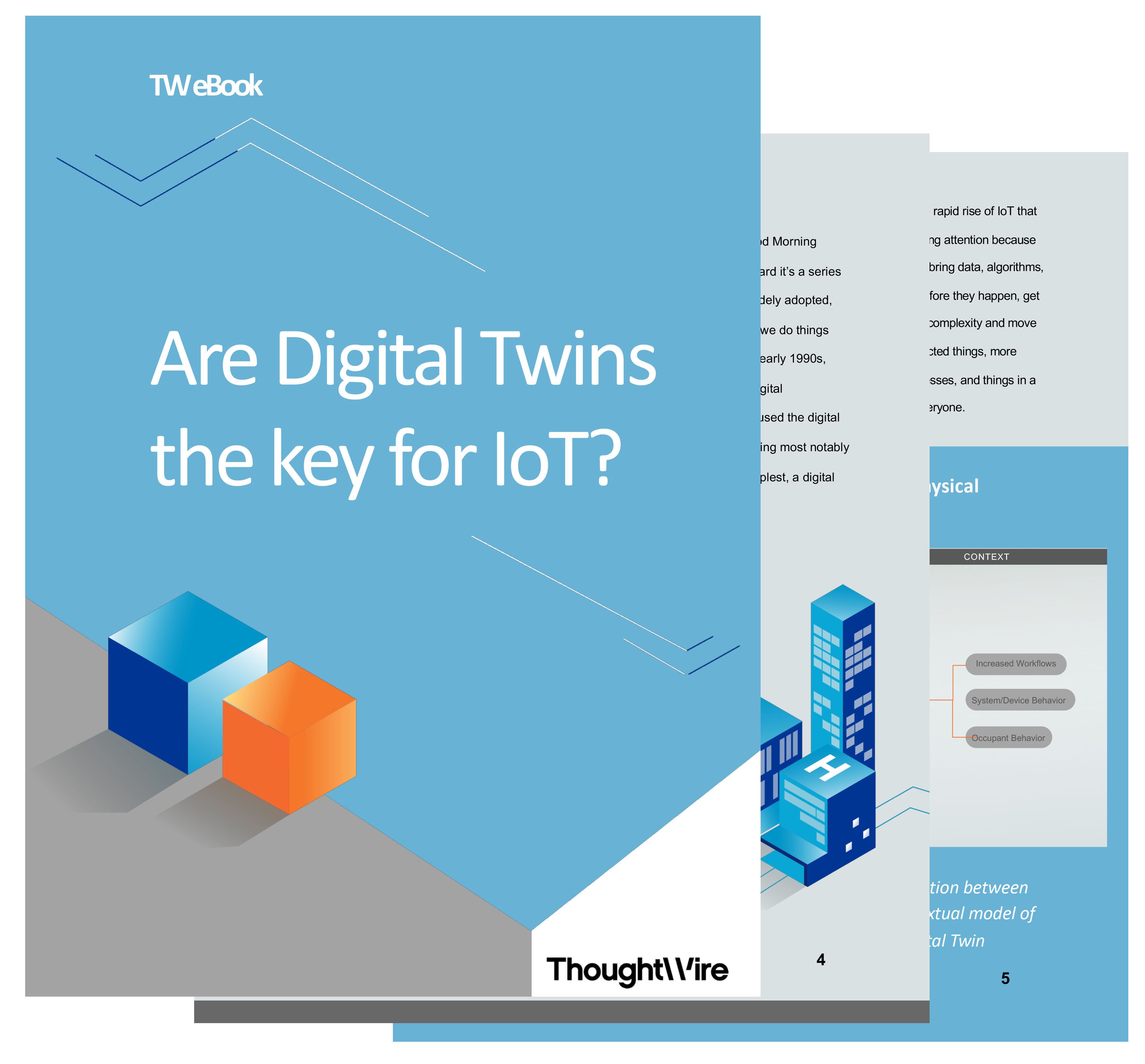Recently, we hosted our first expert webinar of 2019 with Mulvey & Banani, a Toronto-based engineering consulting firm leading the way for Building and Office Intelligence solution design. Watch the full webinar here to learn about the fundamentals of Building and Office Intelligence from Mike Prsa, Principal and Vice President of Mulvey & Banani and Franco Castladini, Chief Commercial Officer here at ThoughtWire.
Below is a transcription of Mike and Franco’s fireside chat style conversation, where they separate hype from reality, talk about the importance of infrastructure design and why a common data layer will help future proof your asset.
Q: The market for technology in CRE is crowded. How do you help customers get started with selecting the right technology? What should those early on in their journey prioritize?
Mike: Most importantly it’s not about technology first. It’s really about sitting down and finding out the individual organization's requirements or the functionality they need or uncovering why they’ve gone down the path of building and office intelligence. In those early stakeholder meetings it’s really our role as the expert to deduce the use cases, requirements and eventually the technology that fits the solution design.
Franco: So you’re advising your clients to look at the outcomes they want to achieve and then work backwards to discover what technology they will need to support those outcomes?
Mike: Absolutely! Your customer may not always understand the highly technical aspects of the technology but they certainly understand their workplace, what makes it more efficient, and by hosting workshops you discover the pain points that exist and then tie it back to how technology may solve those problems. We usually whiteboard this at a number of stakeholder workshops before we even get to the technology.
Franco: Do you find that the outcomes clients are looking for are consistent across various building types and geographies?
Mike: They’re consistent in the foundational reason why they are implementing or investing capital. There are dollars saved, carbon emissions saved, employee wellness, attraction & retention. But the individual use cases that lead to those common benefits change drastically from the OI [Office Intelligence] front because each business has their own objectives, and are more common for BI [Building Intelligence].
Q: You need data to support both Building Intelligence [BI] & Office I intelligence [OI] use cases and there is overlap in data required for those use cases. Do you need a common data layer to support them?
Mike: Everything starts with the largest value, the building level, the Building Intelligence data. We’re pulling data from core systems that control comfort, security, and lighting, which of course means there will be overlap in data sources required looking at OI.
There are two options of how to look at this, it’s realistically a partitionable section of the Building Intelligence platform, where you can provide tenants access to just their own space. Or if proper design practices have been put in place the Building Intelligence data is normalized to common protocols so that data can be shared with tenants who can then build out their own OI use cases.
There definitely is a common data layer that usually involves those core space metrics.
Franco: Couldn’t agree more. At ThoughtWire, we have a strong point of view on this. The data that you rely on today is in silos spread across many different systems, people, and IoT systems that are all disconnected from a data standpoint. Having that common data layer allows you to have the context to support the use cases to unlock some pretty compelling outcomes.
For example, space utilization is definitely a BI&OI use case. On the OI side you have tenants or employees who want to benefit from hot desking. Sit next to my friends, sit in a space with these environmental settings, quite, etc. so on and so forth. All of that data is captured and could be sent to building management and operations team so they can optimize the benefit for their tenants and explore potential cost efficiencies of tying occupancy with operations.
Mike: Yes, for space utilization whether you are using more traditional methods like camera based or thermal based is a huge use case for both BI and OI.
Q: Data is at the center of Building & Office Intelligence. There are many approaches and technologies on the market to collect, manage and synthesize this data. How do you choose the right approach or technology?
Mike: This is similar to what we’ve touched on so far. It really comes down to what an organization is looking for when it comes to core functionality. If they are really only looking at saving dollars and cents and not the bells and whistles, you can run FDD applications that feed into your data lake. Once you define your motivation for deploying these BI or OI use cases, then that is how you should approach the technology. Do you agree?
Franco: Yes, and you touched on this in your presentation that it’s important to support open protocols and data standards, that once modeled this data can be made available to other applications to enable other use cases. It’s something I believe is key for any owner/operator, to make sure they can learn from the data outside the use cases defined by BI or OI. So you can apply data science and unlock new insights. Here at ThoughtWire, we agree with Mulvey & Banani wholeheartedly on that you need to support those open protocols and data standards to get the maximum value out of the investment.
Mike: When we were designing these building intelligence systems in their infancy well over a decade ago, the idea of data and data normalization did not exist in the schematic design phase. It was a factor of whatever protocols the system provided, and us the master technology integrator or BI developer had to try and diffuse and normalize, make sense of these protocols. Now we get involved at that schematic design phase and influencing their specifications, how the building systems are procured so that data is available, is exposed, and can communicate across various platforms.
Franco: Yes, ThoughtWire’s Smart Building suite is supported by a common platform that is an overlay across your various building systems. We have two applications one for the office intelligence called @work and the other for the building operator, that's providing Building Intelligence, PrecisionHub. Both applications support open communication standards so they can share data. South of our platform, the building systems, it’s important for them to support open protocols like BACnet, Modbus, or Restful.
Mike: Unlike a BAS/BMS implementation we get into the actual infrastructure to ensure that the building is future proofed for analytics that may not be compatible with the serialized, daisy chain environment of most control systems. The amount of data, algorithms, and metrics are just going to grow exponentially, not just in CRE but in every industry. Making sure the infrastructure is able to support this is crucial.
Q: There has been a lot of discussion about Digital Twins recently. Is this technology hype or reality? What are the benefits of using a Digital Twin to achieve your BI or OI outcomes?
Mike: Realistically, a Digital Twin is really just a digital replica of a physical asset. So when we deploy sensors and gain data from HVAC or even a person in the building, we’re creating a Digital Twin, and the more data, data points you have the more granular you can get will create a more accurate and precise Digital Twin. The act of having data, storing data in a normalized way that’s usable that is creating a Digital Twin, so it is definitely not hype, it’s a reality and that's what we are doing, we’re striving to make Digital Twins as detailed as possible.
Franco: That’s exactly right. It’s essentially the modeling of the data that gives you the right context so that you can operationalize the data to support the use cases for BI & OI. So that Digital Twin needs to support real-time use cases, needs to be performant and provide a very fast response so that your occupants on mobile applications can access the right information at the right time, and that's all made available to the operations team so they can respond or become more proactive. That living breathing model, the real-time representation of what’s happening in your building is a Digital Twin. The term has existed for a long time and has become popular in industries outside of CRE like the industrial world, there Digital Twins are typically for assets like a wind turbine, but in the context of CRE it’s really more about asset + process. It needs to do both. The asset is your building and the processes are the workflows that bring together the occupant and operations of the building.
Q: How do I get executive buy-in for a building or office intelligence program? What is the risk of not getting started?
Mike: At a BI level, it’s a competitive advantage that will help to get executive buy-in. What we are seeing is that the data, OI & BI requirements are starting to supersede some of the core disciplines. There is a demand from the tenant side and building operators need to keep tenants happy and engaged to keep their buildings leased. By being a leader in smart strategy and have a building capable of providing data to your tenants, they can create awesome spaces for their employees and staff - that seems to be one of the largest drivers from a BI standpoint. There is, of course, operational cost and energy savings involved as well. From the OI side of things, we see the biggest buying factor is creating an engaging workplace experience, that will retain and attract top talent.
Franco: I think NOI is key to measuring that outcome. A smart building is an occupied building with happy tenants. Part of that is the top line in ensuring that you are not losing tenants to buildings that are providing these amenities. It’s starting to happen, more and more buildings are making these investments and tenants have choices. On the flip side, it’s the bottom line and the cost savings that are achieved from BI and coordination with OI mobile app use cases, and that’s really making it more efficient to operate the building. It’s achieved through energy efficiency, better operational response - lower maintenance cost. Remote operation of multiple buildings and “uberisng” your facility management costs in a way that maximises the full value and responsiveness to the tenant and at the same time doing that efficiently. Those costs add up and you start to look at a decrease in your cost per square foot to manage and operate a building. The key driver is the tenants and their expectations. The millennial workforce is raising the bar to what amenities and services you can offer to your tenants, in the form of digital services.
Mike: It’s really an extension to almost all tech applications. From being fully connected at home, you get in your fully connected car - and then you get to your office and go dark for 10 hours before you get home. I think that’s just becoming unacceptable to shut off everything else in your life. So to keep everyone interconnected, the idea of work-life balance means that you should have access to everything, everywhere.
Franco: We spend a lot of time in buildings, and our homes are becoming more advanced than our office space. The expectation is that the experience should be similar
Q: Some benefits are easy to quantify. Office intelligence or measuring workplace satisfaction can be difficult. How do you measure the success of these types of initiatives?
Mike: We would measure success on the usage of the OI deployed. So if you are using some sort of user-facing application or interaction with the OI use cases, you can see right away who’s downloaded the app, who’s using the app, how often and in what capacity. These are all metrics that are easily reportable from the system. So just a function is the system being used is a large factor and employee engagement, it’s never a stagnant adventure. Realistically you are always looking for your system to be modular and scalable, to either upsize or downsize certain use cases based on the feedback you are getting from the staff, whether the use cases are actually relevant or not?
Franco: I couldn’t agree with you more. Understanding engagement and what services people are utilising and how they are utilising their space. The mobile application is providing value to your tenants, but it is also providing insights to your property management teams. That insight is going to help you further optimise your space, your systems and your environment in order to create a delightful workplace experience.
Mike: That’s why we see OI & BI work together so well. The implementation of one, only helps the other. So the more I make my daily activities more streamlined, autonomous and efficient - the outcome is not just employee satisfaction but is actually dollars saved on energy usage.
Franco: We see them as one as well, supported by that common data layer that unlocks the workflows and processes that make it easier for operators to engage with occupants and visa versa. That’s really the outcome that we believe owner-operators, as well as tenants themselves, want to achieve.
Going to Realcomm? Schedule a demo at our booth #1413 to see how ThoughtWire’s smart building suite can help you transform your space and keep ahead of the competition.





